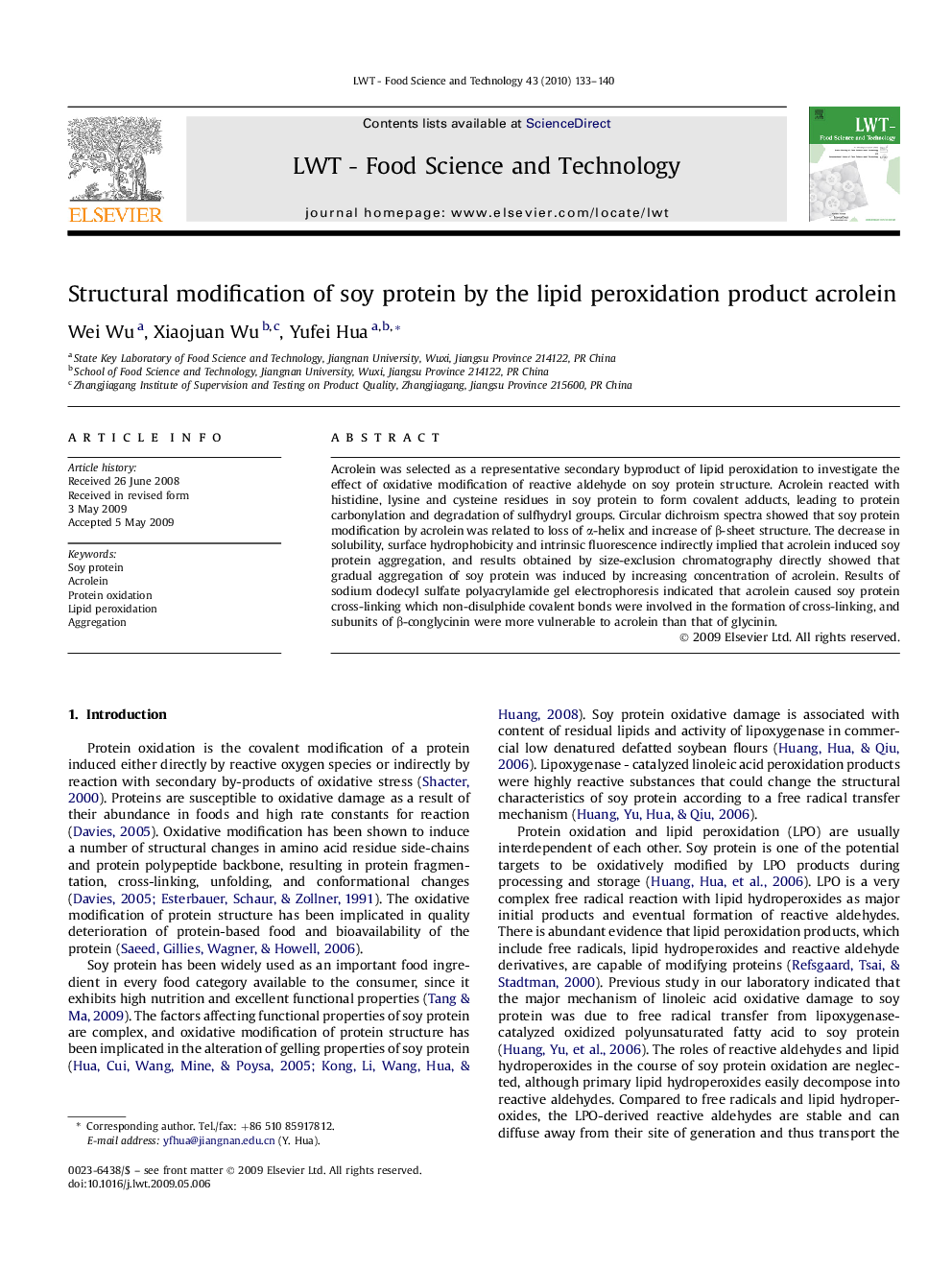| Article ID | Journal | Published Year | Pages | File Type |
|---|---|---|---|---|
| 4564141 | LWT - Food Science and Technology | 2010 | 8 Pages |
Acrolein was selected as a representative secondary byproduct of lipid peroxidation to investigate the effect of oxidative modification of reactive aldehyde on soy protein structure. Acrolein reacted with histidine, lysine and cysteine residues in soy protein to form covalent adducts, leading to protein carbonylation and degradation of sulfhydryl groups. Circular dichroism spectra showed that soy protein modification by acrolein was related to loss of α-helix and increase of β-sheet structure. The decrease in solubility, surface hydrophobicity and intrinsic fluorescence indirectly implied that acrolein induced soy protein aggregation, and results obtained by size-exclusion chromatography directly showed that gradual aggregation of soy protein was induced by increasing concentration of acrolein. Results of sodium dodecyl sulfate polyacrylamide gel electrophoresis indicated that acrolein caused soy protein cross-linking which non-disulphide covalent bonds were involved in the formation of cross-linking, and subunits of β-conglycinin were more vulnerable to acrolein than that of glycinin.
